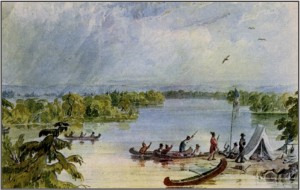Cultural Geology
Cultural geology is our discipline’s contribution to American History and Literature. More broadly, and from this disciplinary perspective, it’s out contribution to Environmental History.
I first heard the phrase from Harry Foster, my former editor at Houghton & Mifflin Company during our initial meeting. At the time, I was summarizing my thoughts about how geology influenced the rise of American culture during the early and mid 19th century.
That lunch was in 1996. Seven years later, I expanded on the idea when writing the inaugural Geology entry for The Encyclopedia of New England (Yale University Press). For general readers, I wrote: “If physical geography is the house in which regional culture makes it home, then geology is its foundation, plumbing, and wiring.” For historians: “Geology, the meat and bones of science, gave natural history the depth of time and the universality of process that would help transition European Calvinism into American Transcendentalism.” And for poets: “The soul of New England perches on a rock.”
I’ve been working on this subject ever since.
Link to: Origins Signature Landforms Sense of Place Geo-criticism (literary “eco-criticism”)
Painting: Itasaca Lake by Seth Eastman (1808-1875) illustrates the “discovery” of the headwaters of the Mississippi River by Henry Rowe Schoolcraft in 1832. I capitalize the word “discovery,” because this lake had, by that time, received three separate names by the Ojibwa, French Voyageurs, and British fur traders. The material source is an enormous aquifer. Courtesy of Minnesota Historical Society
